Automatic Qonto Invoice Backup to Google Drive with Make – Full Guide + Downloadable Workflow
Learn how to easily automate the filing of your Qonto invoices to Google Drive using Make automation. Save time, reduce errors, and streamline your accounting in just a few clicks. Follow the step-by-step guide or download the ready-to-use workflow instantly!
🎉 You're all set!
Your automation, guide, and video tutorial are on their way to your inbox!
👉 Check your inbox in a few minutes (and your spam folder, just in case…)

Trusted by Leading Professionals Across Industries





What Automation Enables for Qonto Invoices to Google Drive with Make
Tired of manually sorting your Qonto invoices in Google Drive? This Make automation is built to save you time by organizing all your invoices automatically—no effort needed.
Here’s how it works: whenever a transaction is updated on your Qonto account, the automation instantly checks if an invoice is available. If it is, the document is downloaded and filed directly into your Google Drive. Each invoice is neatly stored in folders organized by transaction date and type (debit or credit).
Bonus: you no longer need to create folders manually—this automation does it for you in real time. The result? A clean, always up-to-date Drive, perfectly structured for your accounting needs.
No more oversights, mistakes, or wasted time—thanks to our automation agency expertise, your accounting workflow becomes smooth, efficient, and 100% automated! You can also explore n8n as an alternative for similar workflows or check the official Make documentation for advanced customization.
🎉 You're all set!
Your automation, guide, and video tutorial are on their way to your inbox!
👉 Check your inbox in a few minutes (and your spam folder, just in case…)
Video Tutorial: How to Automatically Save Qonto Invoices to Google Drive with Make
Make Workflow Breakdown: Step-by-Step Explanation with Screenshots
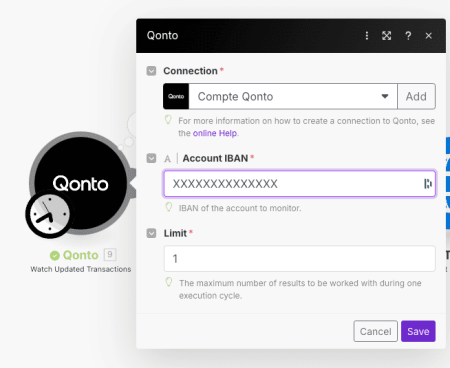
Step 1: Set Up the “Watch Updated Transaction” Module in Qonto
The automation starts with Qonto’s Watch Updated Transaction module. You’ll need to enter your Qonto IBAN and set the limit to 1 transaction per run. This module can be scheduled to run at regular intervals (hourly, daily, etc.), depending on your preferences, as shown in the image beside.
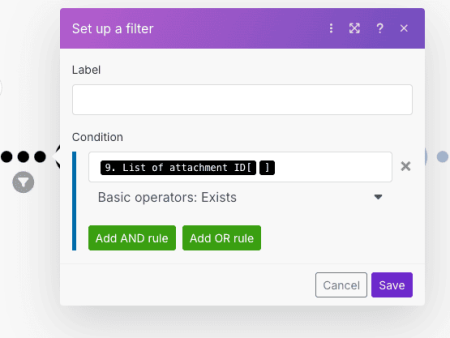
Step 2: Check for an Invoice Attachment Using a Filter
Next, a filter is applied to check whether the Qonto transaction includes an attachment—specifically, an invoice. The scenario only continues if an invoice is actually present, as shown in the screenshot.
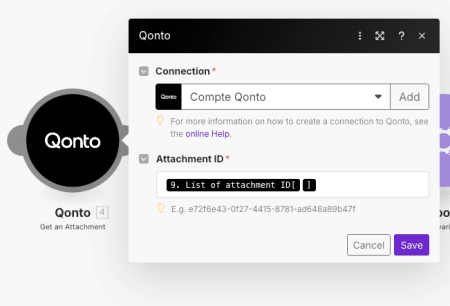
Step 3: Retrieve the Invoice Using Qonto’s Get an Attachment Module
At this stage, the Get an Attachment module from Qonto is used. You provide it with the Attachment ID from the previous transaction step to retrieve the exact invoice.
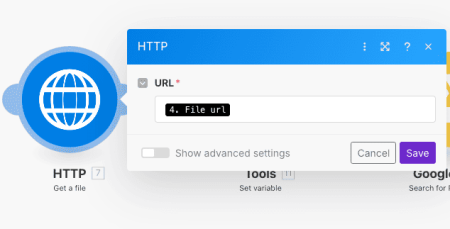
Step 4: Download the Invoice Using HTTP Get a File
Once the attachment is retrieved, the HTTP Get a File module is used to download the invoice using the URL previously provided by Qonto.
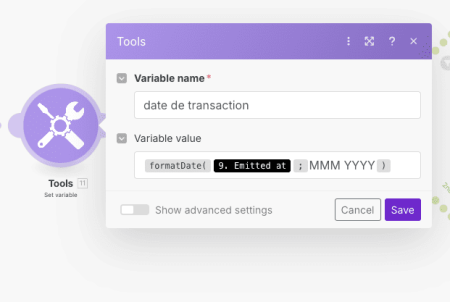
Step 5: Create a Transaction Date Variable
Next, you create a variable called transaction date using the Set Variable module. Define this variable with the following formula: formatDate(date; "MMM YYYY"), which clearly formats the transaction date.
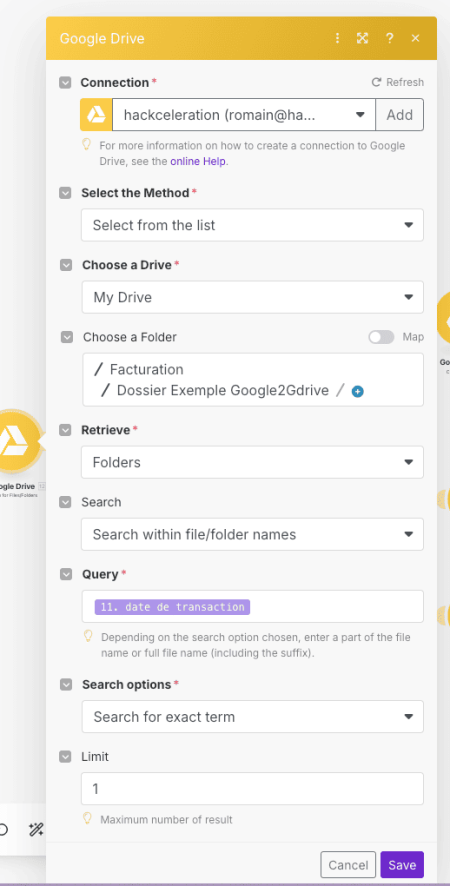
Step 6: Search for an Existing Folder in Google Drive
Using Google Drive’s Search for File or Folder module, search within your specified directory (e.g., example “facturation” folder) for a folder named exactly after the transaction date variable created earlier. Enable “search for exact term” and limit the results to 1.
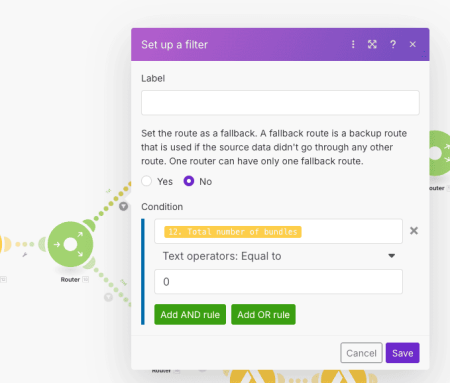
Step 7: Filter to Check If the Date-Named Folder Exists
Next comes a router that splits the scenario into two paths based on whether the Google Drive folder already exists. The current filter checks if the folder with the specific date does not exist yet.
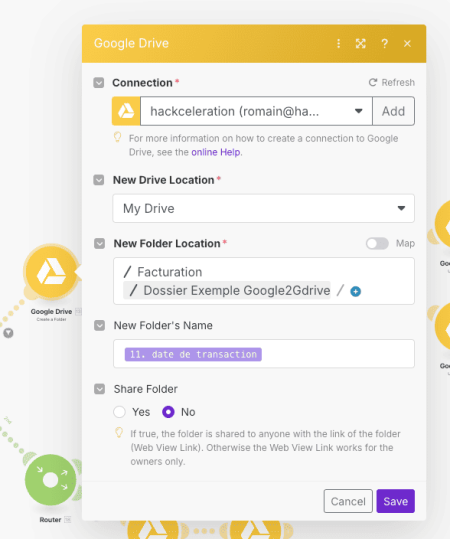
Step 8: Create a New Date-Named Folder in Google Drive
In this case, you use Google Drive’s Create Folder module to create a new folder inside your base directory, named exactly after the transaction date defined earlier.

Step 9: Create a “Credit” Subfolder in Google Drive
Next, inside the newly created date folder, you use the Create Folder module again to add a subfolder named credit, setting the date folder as its parent directory.
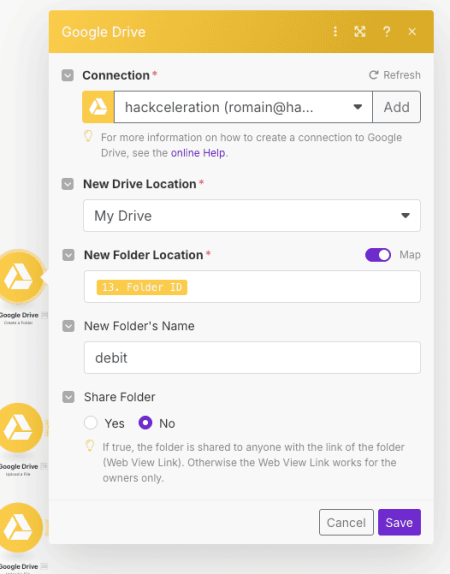
Step 10: Create a “Debit” Subfolder in Google Drive
Using the Create Folder module again, you also create another subfolder named debit within the same parent date folder.
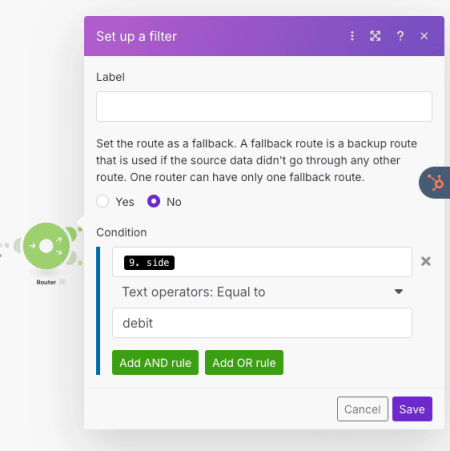
Step 11: Apply Filter for Debit Transactions
The first path after a new router: apply a filter to select only debit transactions from Qonto, as shown in the screenshot.
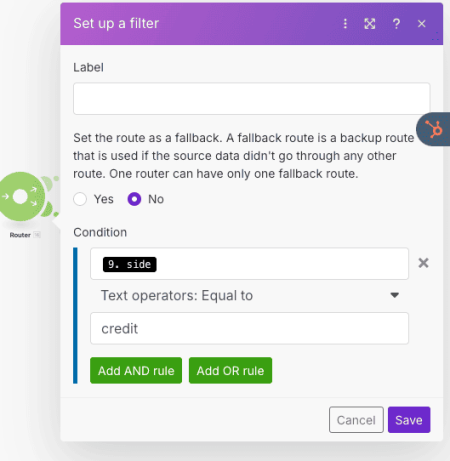
Step 12: Apply Filter for Credit Transactions
The second path: apply a filter to select only credit transactions from Qonto, as shown in the corresponding image.
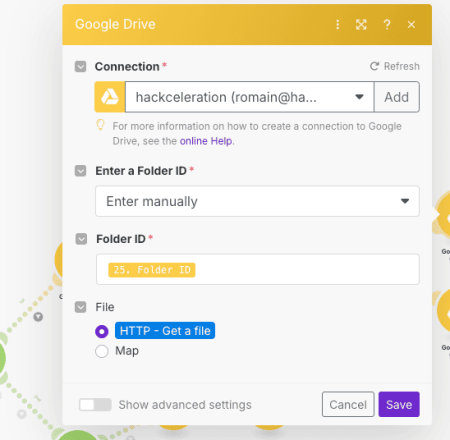
Step 13: Upload Debit Invoice to Google Drive
For a debit transaction, use Google Drive’s Upload a File module. Set the target folder as the debit subfolder you just created, and upload the file retrieved earlier via the HTTP module.
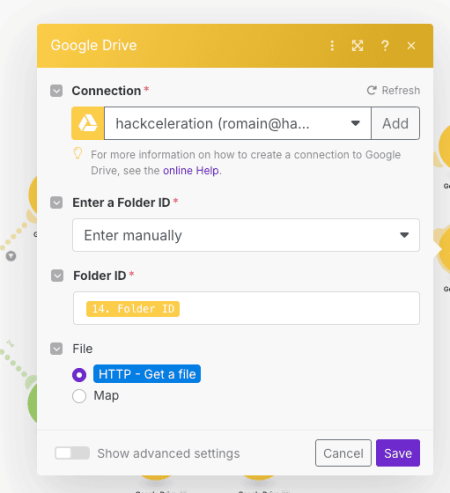
Step 14: Upload Credit Invoice to Google Drive
Similarly, for a credit transaction, use the Upload a File module again—this time selecting the credit subfolder as the destination, and uploading the same file retrieved via the HTTP module.
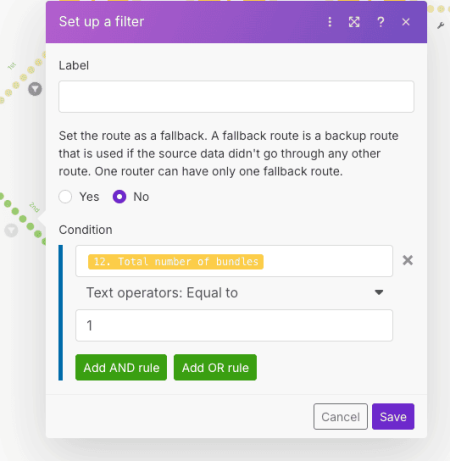
Step 15: When the Date Folder Already Exists
Now, let’s go back to the case where the date-named folder already exists (filter: “total number of bundles = 1”). This path is clearly illustrated in the corresponding image.
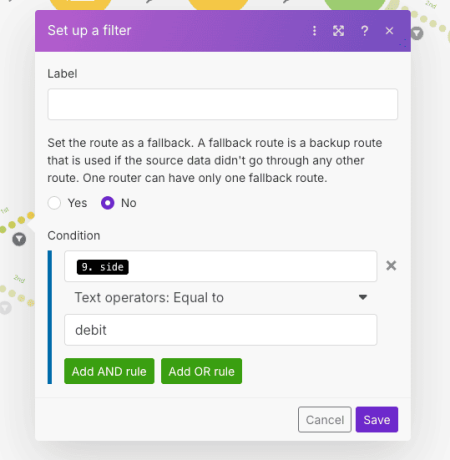
Step 16: Filter for Debit Transactions When Folder Already Exists
In this alternate path, apply a debit filter to select only transactions of this type when the date folder already exists.
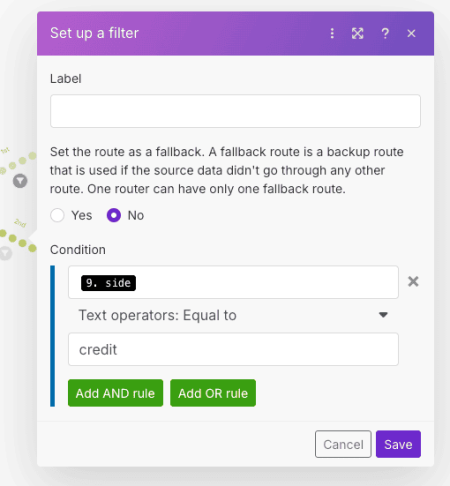
Step 17: Filter for Credit Transactions When Folder Already Exists
Next, apply a credit filter to select only transactions of this type within the same alternate path, when the date folder already exists.
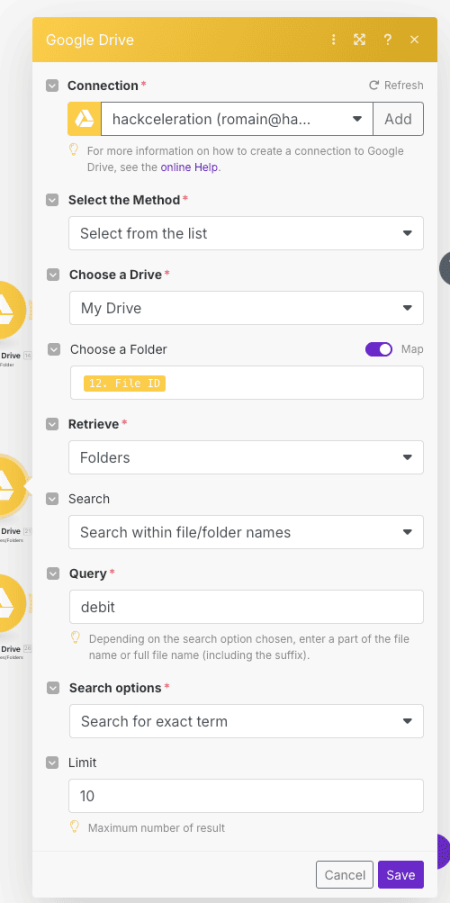
Step 18: Search for Existing Debit Folder
For debit transactions, use Google Drive’s Search for File or Folder module to specifically locate the debit subfolder inside the existing date folder.
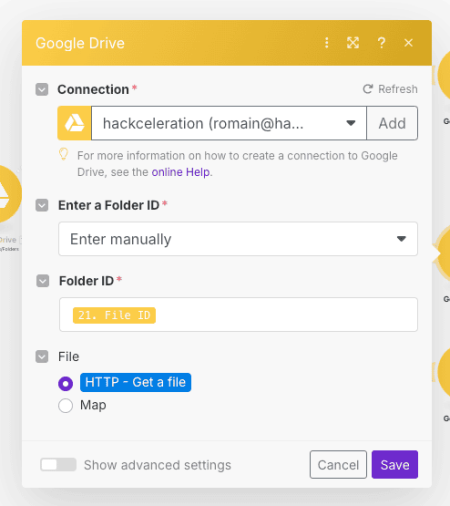
Step 19: Upload Debit Invoice to Existing Folder
Once the folder is found, use Google Drive’s Upload a File module to upload the invoice directly into the existing debit subfolder.
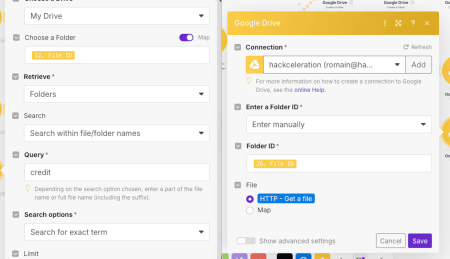
Step 20: Search and Upload Credit Invoice to Existing Folder
For a credit transaction, first search for the existing credit folder, then use the Upload a File module to upload the invoice retrieved via the HTTP module.
Learn how to easily automate the filing of your Qonto invoices to Google Drive with Make. Save time, reduce errors, and streamline your accounting in just a few clicks. Follow the complete step-by-step guide or download the ready-to-use workflow instantly!
🎉 You're all set!
Your automation, guide, and video tutorial are on their way to your inbox!
👉 Check your inbox in a few minutes (and your spam folder, just in case…)
-90% Manual Workload
eliminated from managing and organizing Qonto invoices
3X Faster Response Time
in accounting processing through automatic filing in Google Drive
100% DE FACTURES CENTRALISÉES
in organized folders ready for accounting export
